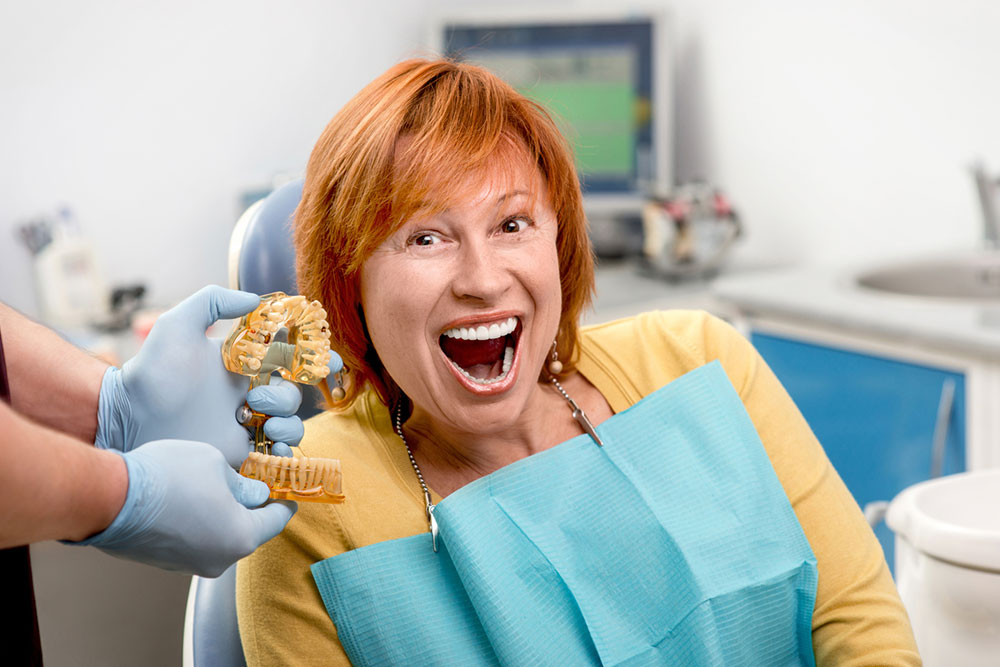9 signs one needs to consider dental implants

Healthy, white teeth are embellishments to a smile, so missing a tooth or two can be a matter of concern for many. Dental implants help one gain replacements for their lost teeth, completing one’s smile. With a 98% success rate, these implants are becoming increasingly popular nationwide, and many find them better alternatives to dentures, which aren’t permanent fixtures. If one’s teeth start to exhibit certain signs, it’s probably time to consider dental implants.
1. Cracked or broken teeth
Cracked or broken teeth usually can be fixed, but in advanced cases with too much damage, the teeth must be extracted. In such cases, one may want to opt for dental implants to replace the extracted teeth, not only for aesthetic purposes but also to avoid pain and discomfort when biting something hard or crispy.
2. Periodontitis
This condition involves severe gum inflammation, which might cause infection. This infection may spread to the bones and other tissues in the oral cavity, especially if the condition isn’t diagnosed early. In advanced cases of periodontitis, the infected teeth need to be extracted and may be replaced by dental implants.
3. Problems with chewing
Chewing difficulties may be caused by several factors, including misaligned teeth, a gap where a tooth may have been extracted previously, and dentures that don’t fit well. Such problems may lead to loss of appetite in the long run, so they should be corrected as soon as possible. Dentists may suggest dental implants if a missing tooth needs to be filled or dentures aren’t effective.
4. Sunken facial appearance
Sometimes, wearing dentures can cause the face to appear sunken because of bone loss in the jaw area. Often, when one wears dentures over a period of time, they may stop fitting properly because of changes in the gums and other teeth that have not been lost or extracted. To avoid such problems, one may go for dental implants, which remain steady and hold the jaw’s structure upright, even as time passes.
5. A loose dental bridge
If a dental bridge shakes when moved by the tongue or finger, it means it has become loose. Eventually, it may be difficult to eat when the bridge is unstable. Dental implants can help ensure stability and may be recommended by dentists for those with loose dental bridges.
6. Gum irritation because of dentures
Dentures that no longer fit well can irritate the gums because they tend to become loose and rub against the gum line. In these cases, they can increase one’s risk of developing oral infections and sores. Dentists may recommend dental implants if loose dentures cause gum irritation or bacterial infections, as they provide stability and resilience to infection.
7. Chipped teeth
A chipped tooth or multiple chipped teeth are caused by an accident or injury, which can be bothersome for many. If the chipping worsens with time, it can cause tooth decay and bad breath. People with a chipped tooth or multiple chipped teeth often opt for dental implants because these match one’s existing teeth and do not look out of place. At the same time, they help prevent tooth decay and are good replacements in the long run.
8. Headache and swelling
Swelling in the oral cavity and a nagging headache could be signs of an oral infection. Such swelling may eventually cause breathing problems. So, dentists usually check the severity of the infection in such situations and determine whether a dental implant may help. Often, a dental implant can prevent the spread of infection and curb further tooth loss.
9. The necessity to deal with denture adhesives constantly
Only those who wear dentures continuously can understand the discomfort of having to use dental adhesives constantly to hold the dentures together. So, if one finds it inconvenient to manage denture adhesives, it’s probably time to switch to dental implants. Since these implants are permanently rooted to the gums, they need not be removed and fixed, so they are much more convenient to manage than dentures. Nevertheless, dental implants also need some care and basic oral hygiene measures, such as brushing one’s teeth twice daily and flossing regularly.
Tips for managing dental implants
1. Understand the procedure thoroughly
Going for a dental implant is a major decision, so one should thoroughly understand the procedure and its pros and cons before opting for it. Also, there are various types of dental implants, which are administered based on one’s condition. For example, a full-mouth dental implant is suitable for those who have lost all their teeth, whereas single-tooth dental implants are suitable for those with a few missing teeth. Knowing what procedure would suit one best and knowing what the procedure entails can help one be prepared.
2. Practice proper dental hygiene
Dentists always advise patients to practice proper dental hygiene after a dental implant procedure. This can help avoid tartar and infections. For example, one should brush twice daily and floss regularly.
3. Avoid certain foods immediately after the procedure
Certain food items may trigger or worsen teeth sensitivity. So, one should avoid crunchy and sticky foods immediately after the procedure and have soft, easily chewable foods instead.
4. Go for regular dental checkups
Even if one does not have any dental problems after an implant procedure, it’s important to go for regular dental checkups and report any issue—however minor—to one’s dentist promptly to prevent it from escalating.

